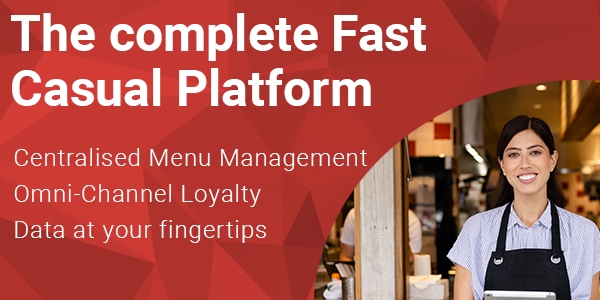Promotional Features
Me, me, me: how first party data helps casual dining restaurants to deliver personalised loyalty
In the world of casual dining, operators know that their customers want loyalty programmes. More than that, they demand it. But not just the run of the mill, ‘one size fits all’ old-style loyalty programmes. What today’s discerning casual dining customers want is ‘me’ loyalty – a program that is personalised and tailored to their unique preferences and behaviours.
In fact consumers are so enamoured of personalisation that 58% of them would ‘switch half or more of their spending to a provider that excels at personalising experiences without compromising trust.’ Casual dining customers who are happy with the level of personalisation within a loyalty program are eight times more likely to be satisfied with the loyalty program overall – and that translates to an increase in overall spend.
More money, more often – that’s the holy grail of casual dining loyalty, and personalisation holds the key.
Getting to know you – the power of data
To personalise though, you must know the person in question – and in today’s digital world, that means data. Capturing, analysing and actioning data is the secret to personalisation and to getting the best bang for every loyalty buck.
An effective personalisation strategy starts with a data strategy, including
- Deciding what data to collect and from where
- Validating and standardising the data to create a single source of truth – with consistent formatting and naming standards
- Ensuring appropriate controls are in place for data integrity and governance
- Analysing the data to understand the story it is telling you – interpret the data and develop the appropriate personalisation action plans
So, it all starts with data. But not all data is created equal. One of the biggest distinctions is between first party and third party data. So let’s take a look at both, and explain why the future of personalisation lies very firmly with the first party variety.
First vs third party data
First party data is that which the restaurant collects itself. The data can come from a range of sources – POS, the loyalty program, website, online ordering and delivery apps, reservations, CRM, customer surveys and feedback, social media or call centres. First party data can include information about demographics, behaviours, interests, time spent on websites and pages visited, purchase history and other interactions.
Third party data is data that is collected by a separate organisation, and passed on to the restaurant. It is typically collected via third party cookies on a website, or via ordering and delivery service aggregators, who capture and pass on information about all orders on their platform. Relying on third party or aggregator data can slow down your responsiveness, and leave you trying to personalise your message to customers based on data that is generic rather than specific. That makes for several significant differences.
Accuracy and relevance: Because first party data is collected directly, it is all from the casual dining restaurant’s own customers, so is highly accurate and 100% relevant. It is collected from people with whom the restaurant has a direct relationship, from actual interactions with the brand. Aggregated data on the other hand, comes from customers of a whole range of different casual dining restaurants. Important detail can get lost in the mix, and customer behaviours may not always be relevant to the restaurant trying to use the data.
Consent and trust: First party data is knowingly provided to the restaurant by the customer. They know that the restaurant is obliged to protect that data under GDPR rules. By contrast, third party data has been passed on, often without the customer’s knowledge or consent. It is not subject to the same regulations and certainly doesn’t generate anywhere near the level of trust. So much so that third party cookies look set to be phased out by Apple and Google in their browsers.
Control and real time access: When a casual dining restaurant collects its own first party data, it has immediate access. This allows rapid analysis and action, giving them a head start on competitors who are waiting to get their data from a third party. First party data puts the restaurant in the driving seat, with their foot firmly on the accelerator.
So for true personalisation, it’s clear to see why first party data wins hands down every time.
Using an aggregation service for orders and delivery can initially look attractive, but taking the third party route means that casual dining restaurants are cutting themselves off from that most valuable of assets – their own data. That’s why so many now prefer a white label offering such as Redcat Delivery. White label means that the restaurant is capturing first party data – data that is relevant, accurate and timely and is the foundation of truly effective personalised loyalty.



